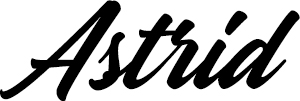Here he is ! Here he is ! It’s an article that I’ve been asked a lot these last few months. I had a bit of trouble writing because there were always aspects of freelancer life in Canada that I was discovering. And that I’m still discovering by the way. I guess part of this article will surely evolve to reflect my reality! And my reality to give some context to those who would come across this article without having read other articles or followed my Instagram adventure is a life in Toronto since 2014 with a return to France between July 2015 and February 2017.
In July 2016, in parallel with my full time job I started my first freelance missions in France as a self-entrepreneur. In the meantime I have continued here and there without this being my full time job. Since July 2019 after I was lay off I am a full time freelancer. To learn more about my professional career you can also read this article. With this article we inaugurate the first article of the new category “Entrepreneurial Life”. I hope that you will find the answers to start your own adventure as a freelancer. If you have any questions, do not hesitate to write them down as comments. Enjoy reading.
First of all, let’s start with a question that may seem simple but that way we’re all sure to start on the same basis: what is freelancing?
Freelance is simply to be self-employed. In France in particular we use the term auto-entrepreneur, i.e. being your own employer. A freelancer is not an employee and carries out assignments independently for several different clients.
How to become a freelancer in Canada in a few steps?
Unlike France where people have to register to become self-employed in Canada you can work independently and issue invoices in your own name without being registered or having an HST number. Here are 3 options available to you:
Under 30K a year
1/ If the turnover of your freelance activity is below 30 000 dollars over the last 4 quarters. You will not need to invoice the HST. You can therefore invoice in your own name and you are not obliged to obtain an HST number. So you do not invoice your customers. Nor will you be able to recover it on purchases you make for your business. You can also choose to incorporate yourself even under the 30 000$ per year, you will have to make sure to invoice the HST (the equivalent of the VAT in France). More information on canada.ca.
Above 30K a year
2/ If you declare more than 30 000$ per year you must have an HST number. You will have to invoice your client and pay it. Several options: monthly, quarterly or once a year. You can get this number online, by phone or directly from the Service Canada offices for professionals: 375 university avenue, Toronto. For more information. If you register online you will pay a $60 fee compared to $80 by mail or on-site. More info here.
3/ You also have another option: to be “incorporated” which means to register as a business and choose if you want to be incorporated federally or provincially, (in other words if you will operate only in your province or nationally) more info here. It’s a quick online process and will cost you $360 in Ontario in person, $300 online (+ approved service provider fee). More info here. Please note that fees vary from province to province. One option considered if you declare a lot (I know “a lot” is fuzzy but it’s up to everyone’s discretion), this option is more expensive.
What kind of freelance job can you do?
In 2018, 2.9 million Canadians were self-employed (sources), full time or in complementary activities. As much to say that there are a large number of options and contrary to what we often hear, freelance work is not limited to the digital industry. One can be freelance, self-employed, in almost any field (except for certain jobs), in human resources, as a gardener, as an accountant. Everything, or almost everything, is possible!
How do you get paid as a freelancer in Canada?
A question that came up often too is the question about payment, I will do an article dedicated to the invoice and taxes but in the meantime here is how you can be paid by your clients:
- Through Interac in the same way that your friends transfer money to you sometimes, you have the possibility to add multiple email addresses to your bank account, so you can communicate your business address to your customers and still be connected to your main account.
- By check, you can use your banking application to deposit it or deposit it directly to the bank. Unlike in France the amount will be paid immediately into your account (often by the time you leave the bank the amount already appears on your account).
- Via Wise for transfers from abroad.
Freelance status and unemployment in Canada
Important to know, if you are unemployed in Canada you have the right to work freelance next door and it’s even encouraged. I spent months and hours on the phone to learn more about this situation. If you are still actively looking for full-time employment and in the meantime you are accepting freelance assignments (or continuing the ones you had next door before) you should report them during your bi-monthly report. Be careful the first time you declare additional income you will have to call Service Canada who will ask you several questions about your status: if you are no longer actively looking for work and you only want to be a freelancer you could lose your unemployment since you are no longer considered as a job seeker (logical!).
Support as an employed freelancer
I haven’t found a program that allows you to start while keeping your unemployment. The leads I was given turned out not to exist anymore. There is a 4-week delay to process your file. In reality for me it took 2 months. I had to call back several times to follow up. Don’t get discouraged. Keep calling back. During which you will not receive any benefits, important to note this.
Also note that if you are still eligible the allowance is retroactive so in the end you will receive it. Once Service Canada has established that you are still eligible, you will have to declare your supplementary income. 50% of your income will be taken into account to determine how much unemployment benefit you will receive for the period in which you declared income. Let me explain: since unemployment benefit is set at a maximum of $500 per week in Canada. If you declare $400 that week, the unemployment will take into account 50% or $200. And pay you the difference to reach $500. Is that clear?
Here are some essential information to start this new chapter of your life as a freelancer in Canada! See you soon for a new article on the life of an entrepreneur!
A bientôt,

















6 comments
Awesome post Anais ! Thanks a lot ! You basically answered all my questions since I am considering a move towards freelancing starting June. Keep up the good work ! Philippe (North York)
Thank you for your feedback Philippe!! 🙂
Hi Astrid
Thanks for writing this article! its very helpful.
I was wondering, I’m working freelance. I have a couple of customers every week. My turnover is way less than 30k a year.
Do I need to register somewhere or write and keep every invoice?
Do I need to report the income to the Canada Revenue Agency?
Many thanks and happy new year !
Hi Astrid
Thanks for writing this article, it’s very helpfull !
I was wondering, I’m freelance and I have a couple of customers sometimes but I make way less than 30k per year.
Do I need to invoice my customer?
Do I need to register my activity somewhere?
Do I need to declare my revenue to the Canada Revenue Agency?
Many thanks and happy new year!